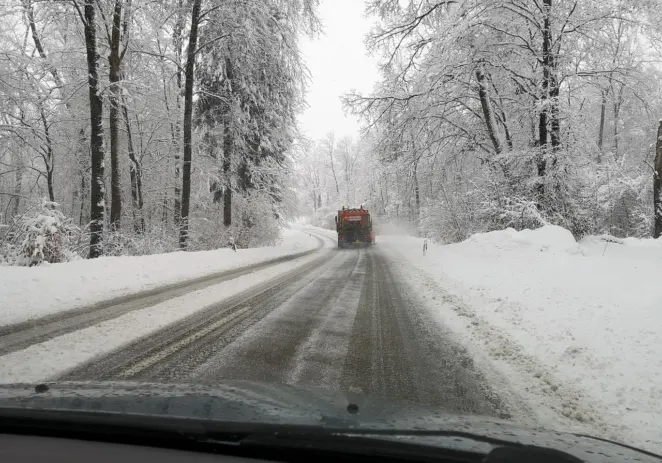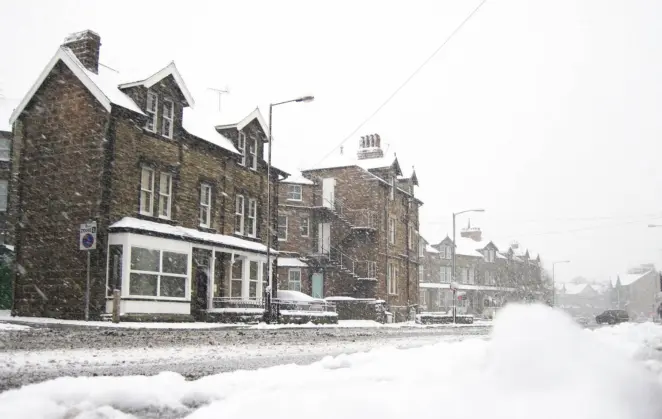UK Snow: Why the UK Struggles & How to Prepare
Heavy snowfall is a regular part of winter across much of Europe, North America, and Scandinavia. While it can be seen as an inconvenience, roads are cleared, schools stay open, and people continue with their daily routines.
In contrast, even a few inches of snow can bring widespread disruption in the UK each year, with trains delayed, flights cancelled, and roads blocked.
This causes many people to wonder why the UK struggles so much. Is it really that we’re just bad at handling snow, or are there other reasons behind it?
How Do Other Countries Cope with Snow Better Than the UK?
When heavy snowfall becomes a regular event, local councils prepare well in advance. They stockpile large amounts of rock salt and use heavy-duty machinery to clear main roads.
In Finland, some residents pay a small yearly maintenance fee to the government to keep roads safe during winter. A typical detached house might pay around £70 per year. Most people see this as a fair investment since the Finnish government aims to have all main roads cleared and gritted by 7 a.m. However, the footpaths are expected to be cleared and gritted by the homeowners themselves.


This is very different from the UK where people are often advised to stay indoors during ‘heavy’ snowfall. When asked how Finnish people would react to this advice, the Deputy Mayor for Urban Environment said, ‘It wouldn’t go down well at all. People would probably think the city was avoiding its responsibility to keep things running, even in cold and snowy weather’.
Countries that experience regular snowfall also design their infrastructure with winter conditions in mind. Iceland, Japan, and some Scandinavian countries, including Norway, all invested in heated roads. These prevent snow and ice from forming and reduce the need for constant gritting. It can be done in multiple ways, but the most popular method is to install a network of water pipes under the surface. The hot water passes through these, keeping the road warm. However, these systems are expensive and only used on the main roads.
Colder countries also tend to invest in heated train tracks on any critical components, such as junctions. This prevents these from freezing and avoids any delays during the colder months. While the UK also uses heated points in critical areas, coverage is limited to major junctions and high traffic routes.
Winter tyres are another feature that helps people in colder regions handle snow safely. They are made from a different type of rubber than summer tyres, so they don’t go hard at lower temperatures. This gives much better grip on icy and snowy roads. In many countries, including Germany, winter tyres are required by law during the colder months and drivers can be fined if they don’t use them.
In many countries, including Germany, winter tyres are required by law during the colder months and drivers can be fined if they don’t use them.

Why Does UK Snow Cause So Many Disruptions?
The snow in the UK causes disruptions for many reasons.
The first one is unpredictability. According to the previous RAC Chairman, David Quarmby, ‘Our winters are very unpredictable in this country. These cannot be fairly compared to Scandinavia or Canada. They know almost to the week when the snow is going to come and they are organised for it’. The days the UK gets snow can vary from year to year, making it harder to prepare.
Preparation also costs a lot of money.
Large quantities of rock salt need to be bought by the councils and then stored, possibly for a long time, waiting for a sudden cold snap. The councils also need to have the equipment required for snow removal and to spread the salt, such as gritting trucks. These can be extremely expensive, costing on average £80,000 for a basic model. Heated roads also cost thousands of pounds per square metre.


While this is a worthy investment for colder countries, such as Finland, which on average experiences around 100 days of snow in the south and 175–225 days in the Lapland area, snow in the UK typically lasts around 13 days.
As a result, many local councils attempt to save money by failing to prepare for the eventuality of snow. Every pound that could be spent on preparing for a harsh winter will be weighed against how long the disruption will last. This opens up room in the budget to be used elsewhere.
However, when the snow finally falls, it leaves many people unable to go about their daily commute, with disruption for extended periods of time.
Most people are not willing to buy winter tyres for the same reason: having to purchase an extra set costs money.
Paying someone to store them or having to waste space in your shed or garage, is inconvenient too with snow being so rare - even if they do help with frost, which is more common. Some people, especially in Scotland, choose to have all-season tyres for this reason, but most of the UK still uses summer tyres all year round.
The low number of snow days also poses another problem – the country is simply not used to it. As a result, a lot of people struggle to walk or drive in these conditions, increasing the number of accidents and vehicles getting stuck.
To learn how to do this safely, make sure to read our ‘Travelling Safely in Winter’ blog.


How to Prepare for Snow in the UK
If you own a property, run a business, or are responsible for keeping premises such as schools or hospitals safe and accessible, prepare for UK snow by investing in de-icing salt.
Depending on your needs, there are two types that you can choose from:
- White Salt – ideal for areas that experience a lot of traffic in and out of buildings. It leaves no residue behind, helping to keep those spaces clean.
- Rock Salt – a cost-effective, reliable choice for most applications, but it can leave a slight residue behind.
De-icing salt works by lowering the freezing point of water. This stops the ice from forming and reduces the build-up of snow. Keeping a supply on hand means you can keep your area safe and accessible for everyone, even in case of a sudden cold snap.
In the event of heavy snow in the UK, you may also need to use a snow shovel before applying salt, as it works best when it makes direct contact with the pavement. Shovels are available in a range of materials to suit your budget. Plastic options are lightweight and affordable, while metal ones are more durable and long-lasting.
UK snow brings widespread disruption for many reasons. It usually lasts only about 13 days, and its arrival is hard to predict. This makes councils reluctant to invest heavily in gritting or snow-resistant infrastructure. On top of that, many people are not used to snowy conditions, and winter tyres are rare. This leads to more accidents and stranded vehicles.
That’s why it’s so important for property owners, businesses, and anyone responsible for keeping buildings accessible to have de-icing salt on hand. Treating walkways and driveways early can stop ice from forming and prevent snow from building up, keeping everyone safe.
Now that you know how to prepare for snow – why wait? Explore our full range of rock and white salt today! With 20 years of experience, our de-icing experts have the right solution for every property and business.


